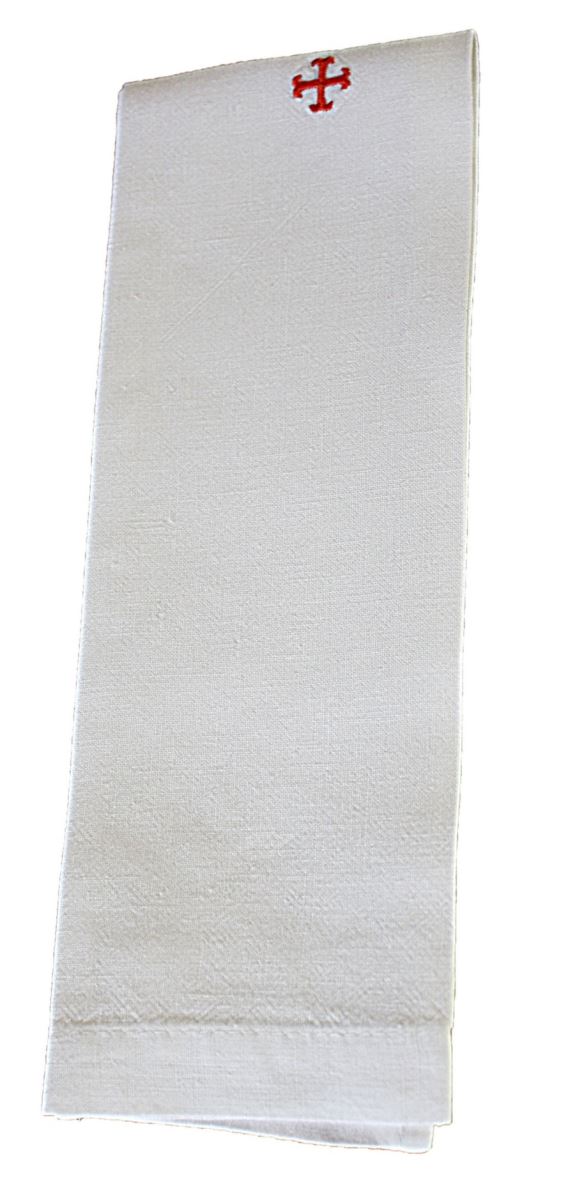 This is the liturgical napkin. It is usually made of linen or some other absorbent cloth and is embroidered with a cross. During the Mass they are placed on the altar when this is prepared at the start of the Liturgy of the Eucharist. Later they will be used at Holy Communion to wipe the lip of the chalice after each communicant has received the Precious Blood. Once the Mass is over they will be used to dry the chalices after Father Paul or Deacon Michael have purified them.
This is the liturgical napkin. It is usually made of linen or some other absorbent cloth and is embroidered with a cross. During the Mass they are placed on the altar when this is prepared at the start of the Liturgy of the Eucharist. Later they will be used at Holy Communion to wipe the lip of the chalice after each communicant has received the Precious Blood. Once the Mass is over they will be used to dry the chalices after Father Paul or Deacon Michael have purified them.
When preparing the credence table before Mass always put out one less purificator than there are chalices for the people. The remaining purificator goes over the top of the priest’s chalice – see ‘How to dress the chalice’.
During the Mass while it was being used the purificator may have absorbed some of the Precious Blood. Be very careful when carrying chalices back into the sacristy that it does not fall on the floor. If necessary take one chalice at a time using one hand to keep the purificator in place. Because it may have absorbed some of the Precious Blood there are special procedures set out for washing them once they have been used.
In addition to wiping the lip of the chalice, the purificator is also used to wipe the feet of the corpus, the figure of Christ, during the veneration of the cross at the Solemn Celebration of the Lord’s Passion on Good Friday afternoon.